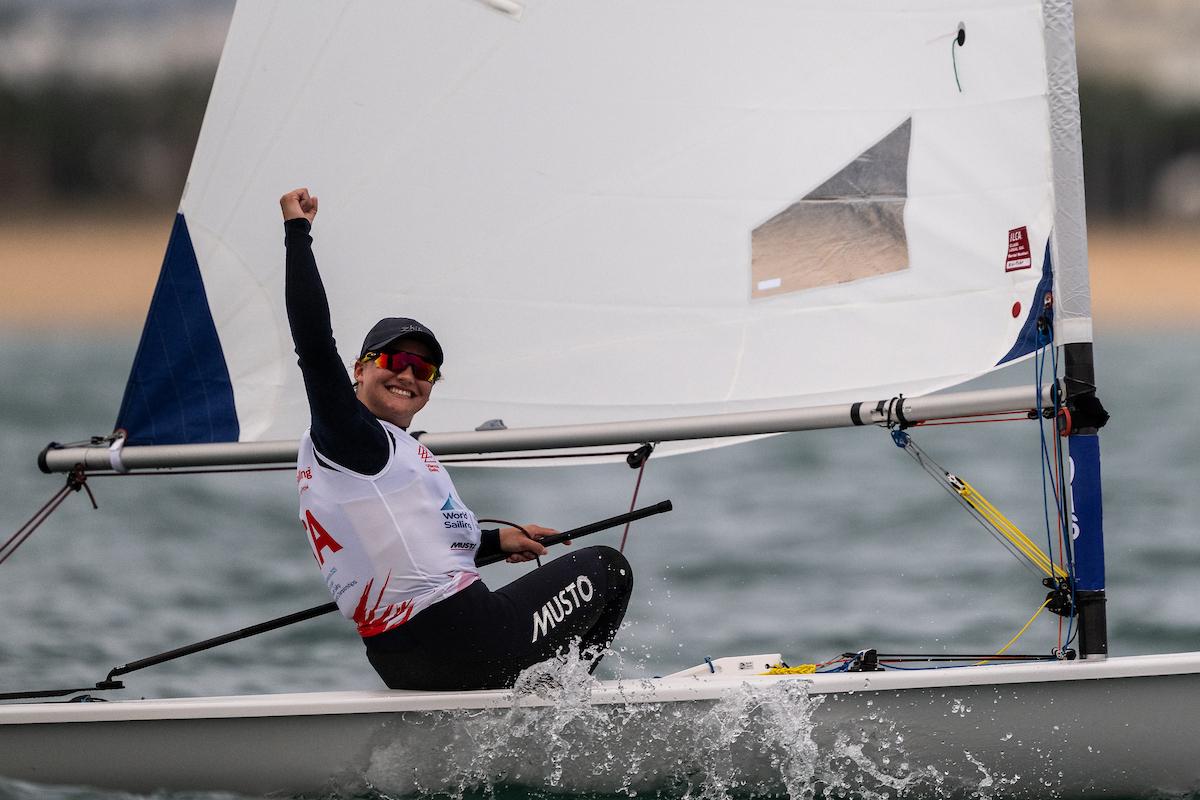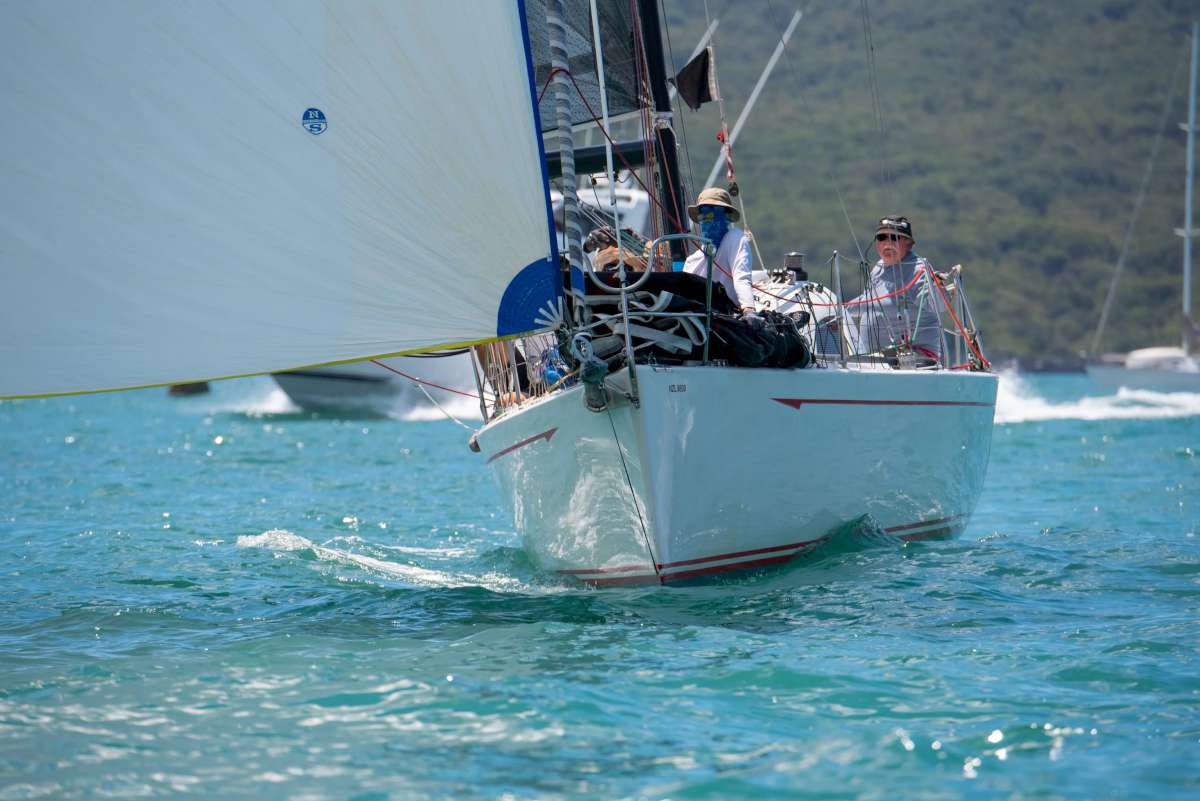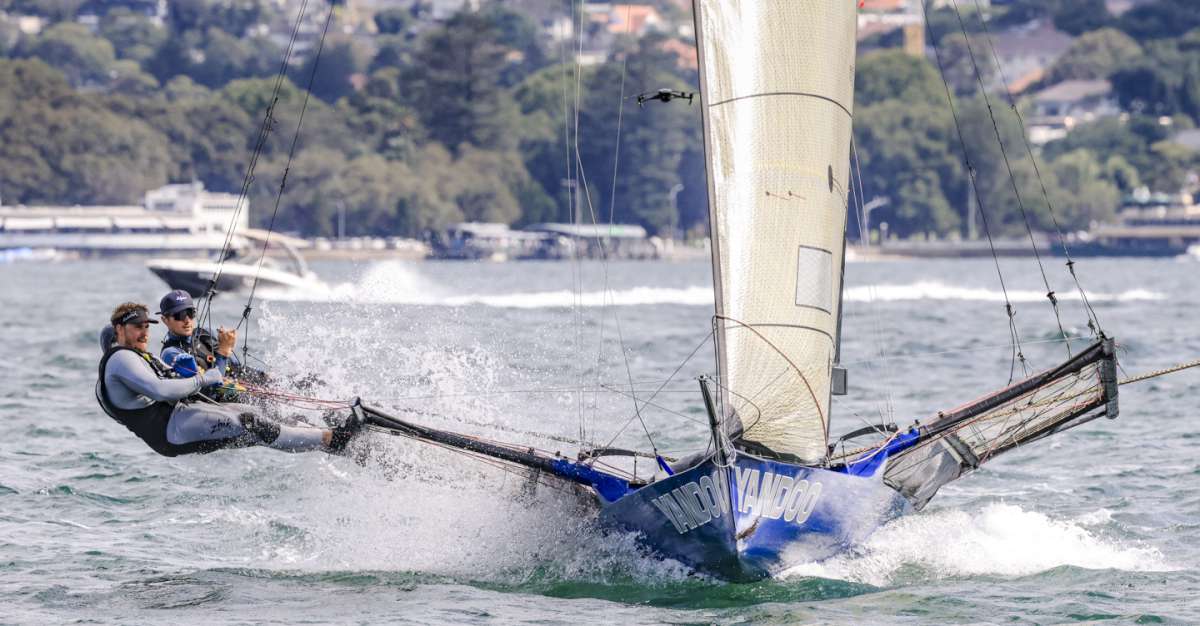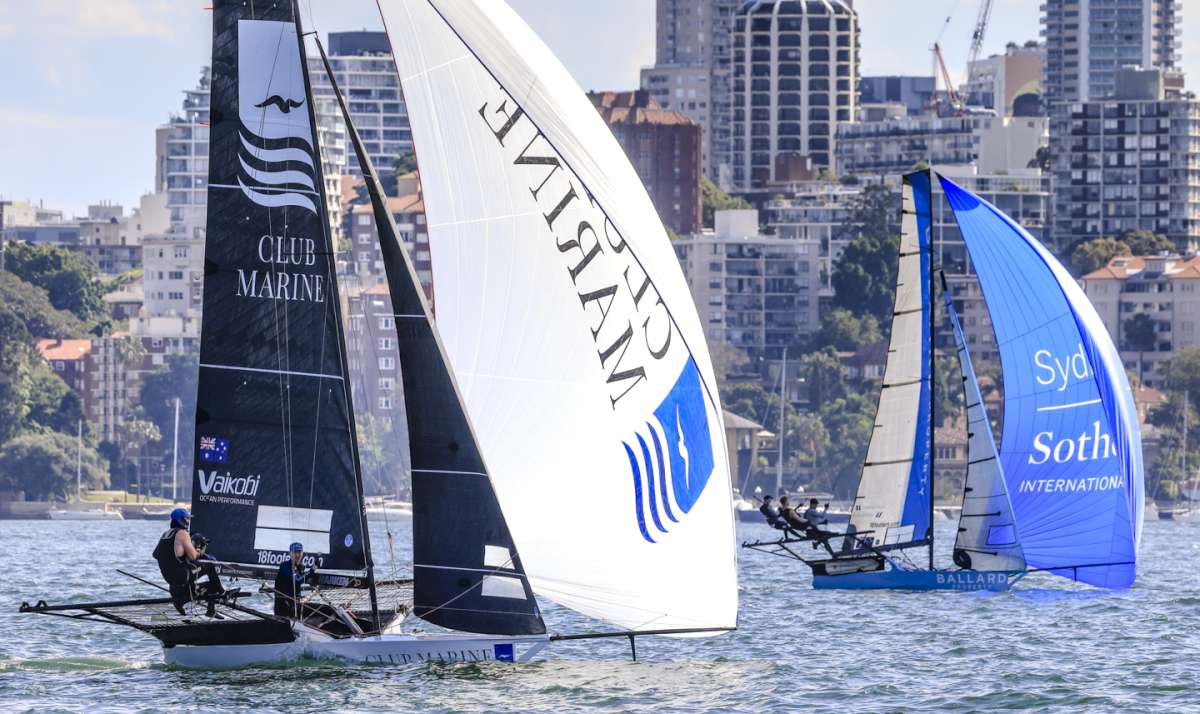Mysailing's Caroline Strainig, also editor of Cruising Helmsman magazine, caught up with Mike Prince, the Director of Charting, Australian Hydrographic Service (AHS), to ask him about charts and the role of the AHS.
1. How do you think electronic charts should be used in conjunction with paper charts, and what is your general advice about the accuracy of paper charts?
Official Electronic Navigation Charts (ENCs) are those published by a national hydrographic office to the combined S52 and S57 standards (as distinct from those produced by commercial companies). In Australia and PNG, official ENCs are produced and maintained in parallel with the Australian paper nautical charts by the Australian Hydrographic Service. Both therefore contain the same information, including information on the accuracy of soundings and other features. Official ENCs are primarily intended to meet the requirements of the International Maritime Organisation and commercial shipping.
“Unofficial” electronic charts are more tailored products – while they are extremely popular, and many recreational mariners use them without incident, the AHS experience with some manufacturers, particularly in responding to two recent well-publicized (and expensive) yacht losses, has been that they can generate over-confidence in the apparent accuracy of data, and that commercial chart “packs” may not contain all charts necessary for the safe conduct of an intended voyage. To address these issues, there are a few practices worth following:
Firstly, as a precaution, if an electronic (or paper) chart does not show variations in the quality of the soundings then proceed with caution – the reality is that almost all charts are developed from a mosaic of different surveys, so a good chart will show you which areas can be relied upon completely, which areas are poorly surveyed, and the shades of grey in between.
Secondly, when planning each leg of a voyage, and well before leaving port, step through every single large scale chart available within the pack or your folio which is on or near the route. Determine whether the right charts are present, which others might be needed, or what changes might be necessary to your planned route (including sections to be undertaken in daylight and darkness). This is a sound practice followed by every professional mariner prior to every voyage.
Finally, don't be penny wise and pounds poor – a small-scale chart is designed for route planning and ocean passage well clear of land and reefs. If you intend passing close to a reef or sailing into a bay, buy a larger scale chart. If you haven't got that chart, stay further offshore or conduct your approach in daylight with the sun high in the sky. How far is ‘further offshore'? In some remote areas, such as in the middle of the South Pacific Ocean, some reefs can be at least three miles from their charted position, while others are surveyed to within 20 metres or less.
2. How does the Hydrographic Service get the information for the charts?
The AHS gets the information for charts from many sources. These include the Royal Australian Navy's survey ships and aircraft, port authorities, State maritime safety and mapping authorities, other government agencies, marine research organisations, oil and other resource companies and mariners in general.
3. How often do charts get updated?
The AHS publishes free Notices to Mariners each fortnight. These contain information affecting maritime safety that is applicable to all charts published by the AHS. They are equally applicable to paper nautical charts, Seafarer Raster Nautical Charts (electronic ‘facsimilie' copies of Australian paper nautical charts published in the HCRF format) and official ENCs.
Users of paper nautical charts are generally expected to apply the correction themselves, while those using official ENCs automatically get sent an updated version of the affected chart on each occasion a change occurs as a result of a fortnightly Notice. RNC users, including those subscribing to the equivalent Admiralty Raster Chart Service, can choose to ignore updates (not recommended), do a periodic update (such as just prior to commencing a voyage), or make use of the automatic monthly update service.
4. How and where can you find updates of charts?
Notices to Mariners are available for download each Friday fortnight from the AHS website http://www.hydro.gov.au/ . There is also a customised service called e-Notices – if you subscribe and tell the AHS which Australian charts you have you will be sent a customised collection of relevant notices each fortnight. Alternatively, on the website, the Australian Chart Index lists all published Australian charts, provides a thumbnail, and lists / links every Notice applicable to the current edition of the chart. This is the most convenient way to get a folio of paper charts back up to date after a winter lay-up. All Notice to Mariner services are free.
5. Which charts are accurate? Which ones cannot be relied on?
All charts, whether paper or electronic, contain data which varies in quality due to the age and accuracy of individual surveys. In general, remote areas away from shipping routes tend to be less well surveyed, and less frequently, while areas of high commercial traffic are re-surveyed frequently to very high levels of accuracy, particularly where under-keel clearances are small.
In terms of specific charts, the accuracy and reliability of the information used to compile nautical charts is shown on each chart as a Zones of Confidence (ZOC) diagram. Within official ENCs, the same information is shown as a layer which can be switched on and off by the mariner. ZOCs were developed by the AHS but have since been adopted for international use.
ZOC categories warn mariners which parts of the chart are based on good or poor information and which areas should be navigated with caution. The ZOC system consists of five quality categories for assessed data, with a sixth category for data which has not been assessed. The table accompanying the ZOC diagram on each chart summarises the meaning of the ZOC categories. Further details of ZOC categories are published in the Australian Seafarers Handbook and on the AHS website. It is vital that mariners appreciate the limitations of the nautical chart in use, particularly when venturing into remote areas or very close inshore.
There are also other clear signs on charts to show areas of differing survey accuracy and reliability. In areas of high confidence, soundings are shown in bold italics, are evenly spread and fairly close together, while the depth contours are shown as continuous. In areas of older or less detailed surveys, the soundings are shown in a faint (hairline) and upright style, progressing to areas of broken contours. Below this level of confidence, the hairline soundings become less dense and contours only appear in a few places, often accompanied by the note “inadequately surveyed” for larger areas. Seafarer RNCs display information in exactly the same manner as the paper chart, while on official ENCs, less reliable soundings are shown circled and tagged as “approximate”, while the same contouring practices apply. Progressively greater levels of caution are needed in areas where more of these signs are apparent.
6. If you find something that's not on the chart, what do you do? Who do you tell? What info do you need to give?
Any and all information is always gratefully received and acknowledged. The most comprehensive method is to fill in as much of a Hydrographic Note as you can. These can be obtained from any edition of Notices to Mariners or from the AHS website.
Whether or not a Hydrographic Note is used, the most helpful information you can provide is:
-
your position (stating datum WGS or other)
-
date and time of observation
-
depth and
-
whether this was depth to keel (and the vessel's draught) or waterline.
If a depth isn't possible it doesn't matter too much as terms such as ‘shoal reported' and ‘obstruction' are not depth dependent. However, they are sufficient to warn others of the existence of a danger.
Reports can be forwarded by email (ntm@hydro.gov.au), by telephone to
02 4223 6500, or by mail to:
Australian Hydrographic Service
Locked Bag 8801
South Coast mail Centre
Wollongong NSW 2500
7. If you tell the Australian Hydrographic Service about a new bommy (for example), what will they do with the information?
Information of this nature goes to the Notices to Mariners team who will quickly assess the report for its accuracy, navigational significance and any corroborating information. They can also pass on information to other national hydrographic offices if a report affects charts published or reproduced by another nation.
Depending upon risk assessment and confidence in the report (reporting a “bommy” would be rated highly, though reported positions are often vague), the report would be published as a Notice to Mariners in the next fortnightly edition, then applied to the chart so that it becomes a permanent feature.
Some reports are published as Temporary (such as a light extinguished) or Preliminary (forecast changes). An obstruction that is considered to warrant further investigation beyond just warning of its existence will normally result in a Navy survey ship or aircraft being dispatched at the next opportunity.
Reports in ports and harbours are normally referred to the port authority or State maritime safety authority for further investigation. The results of these surveys are then incorporated as either a single or 'block' correction to the existing chart, or may even trigger a new edition of the chart.
8. Are there any examples of what you should and shouldn't do?
A 2008 report from a yacht cruising the far north Queensland coast provides the perfect example to illustrate several of these questions. The vessel hit a previously uncharted submerged rock while motoring close inshore. It was early evening, so visibility of submerged objects was very poor. Damage was fortunately slight though events were a bit dramatic at the time. The owner later wrote to the AHS to pass on very comprehensive information, which then resulted in a Notice to Mariners.

Obviously sailing in a shoal area like this is hazardous.
However, it has to be asked, why was the yacht there? The area where the yacht grounded is clearly very shallow, being between the 2 and 5 metre depth contours. The ZOC diagram elsewhere on the chart shows the area to be assessed as ZOC C, the associated sea floor coverage description for this category stating that “depth anomalies may be expected”. Further, the area is shown with upright and hairline soundings, broken contours and, above all, is mid way between a charted rock and an area of broken seabed named Kangaroo Shoals. All these indicators should have provided the necessary warnings. Unfortunately, understanding a chart is more than just reading a map.
9. Is it law for a 40ft boat to have to carry Australian Hydrographic Service paper charts or ENCs if they are cruising in Australian waters? What is the law about what charts you have to carry?
The requirements for recreational vessels are determined entirely by the various State maritime authorities, while those for commercial vessels are now contained in the National Standards for Commercial Vessels, Section 7C, which is being progressively adopted by the States throughout 2008 – 2009. While the AHS does not control these requirements the last time AHS staff reviewed existing regulations for recreational vessels was about five years ago. At that stage, the requirements, as best they could be ascertained, were:
NT – Marine (Pleasure Craft) Regulations 1985 (NT) (as amended 2002) – any vessel of more than 5 metres in length must carry a chart of the area of operation.
VIC – Marine Regulations 1999 – specific requirements are unclear; Section 230 of the Act identifies equipment that must be carried on recreational vessels but does not specifically require recreational vessels to carry charts.
QLD – Transport Operations (Marine Safety – Recreational Ships Miscellaneous Equipment) Standard 1988 states that a recreational ship should carry a navigation chart appropriate to the area of operation, when operating beyond smooth waters.
NSW – Boating (Safety Equipment) Regulation (NSW) – recreational vessels must carry an appropriate chart or map where the vessel travels in open waters. Within the regulations this is defined as an Admiralty or Australian Hydrographic Chart of the area proposed for the vessel's voyage or excursion. In contrast, the NSW Boating Maps are marked 'not for navigation'.
SA – Harbors and Navigation Regulations 1994 (SA) – recreational vessels are only required to carry a chart or map in unprotected areas if the vessel is operated more than 10nm to seaward of the low water mark.
TAS – Marine and Safety (Motor Boats and Licenses) By-laws 1998 (Tas) – the by-laws specify minimum safety equipment, but make no requirement for carriage of charts.
WA – Navigable Waters Regulations (as amended 2002) (WA) – the regulations specify equipment levels for recreational vessels but do not specifically require recreational vessels to carry charts. However, they do contain a general obligation to ensure safe navigation.
Despite these general requirements, operating a vessel without a chart in any unfamiliar area, particularly where the distance at which any submerged obstruction can be seen is less than a vessel's stopping or turning distance, has repeatedly proved embarrassing at best, and dangerous and expensive at worst. Remember, visibility of reefs and other obstructions at night is effectively non-existent – compared to the cost of supplies for even a short cruise, a chart is cheap. When compared to the cost of replacing an expensive yacht, it's an absolute bargain. The loss of two yachts on offshore reefs at night in the last 18 months tends to prove the point. Given the distances offshore, the crews were lucky to be rescued in time.
10. Do you have to record your trip anywhere?
Commercial vessels are required to be able to reconstruct their track in the event of any incident. Using a traditional ship's log, this was normally done by recording each alteration of course, the new course and speed and the first fix after alteration. These days, many GPS and chart plotters record this information automatically. While requirements for recreational vessels are governed by State maritime authorities, it's a good idea to record your trip no matter what, even if only to be able to find that perfect anchorage or fishing spot next time. One day, it might even be the difference between a good day in Court, or not, if that favourite fishing spot is close to a marine park. On a broader level, telling someone ashore where you're going, and when you'll be back or arrive, is never wasted effort – just stay in the habit of also telling them when you've actually arrived.
11. What is the copyright on charts?
The Commonwealth of Australia owns the copyright on all nautical charts produced by the AHS. It applies to all paper nautical charts and nautical publications, such as the Australian National Tide Tables, as well as all the Seafarer electronic products. The United Kingdom Hydrographic Office is authorised to reproduce selected Australian charts within their British Admiralty (paper) and ARCS (HCRF) series. A number of commercial companies have licenses to use the data contained in the Australian charts, though it is important to note that the Commonwealth accepts no liability for the accuracy of copying of information contained in these products, or any modification which may have been made, and does not warrant that these products meet any regulations as an appropriate product for navigation.
12. Where can you get charts?
All AHS charts and other products are sold or issued through a distribution network. All distributors' names and contact details both within Australia and abroad are listed on the AHS website http://www.hydro.gov.au/ under ‘distribution network'.
* Mike Prince is the Director of Charting within the Australian Hydrographic Service. He is a hydrographic surveyor by profession, as well as a former naval officer with experience as a Commanding Officer and Navigating Officer. He still sails when time permits.
























